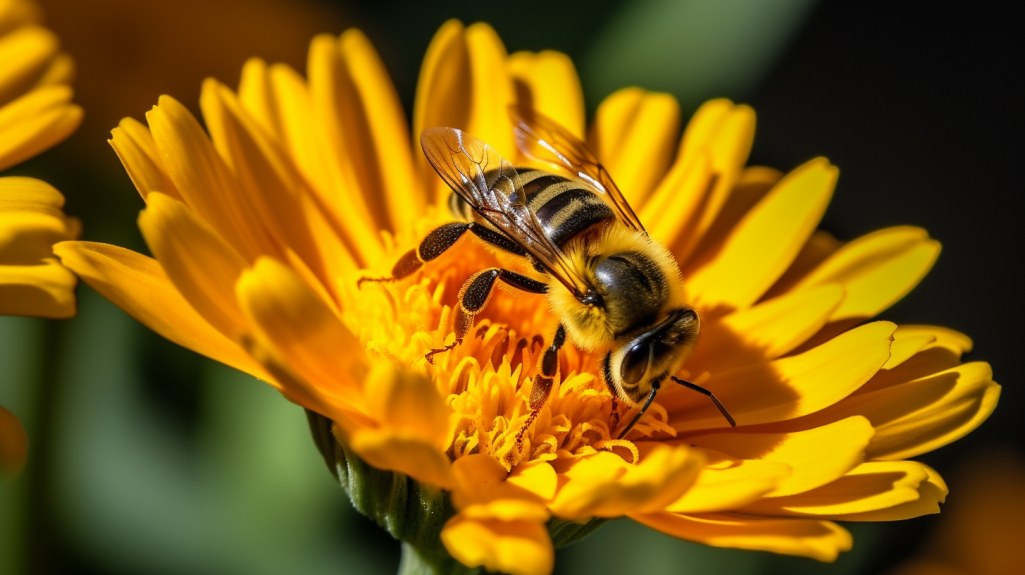Bees, those industrious pollinators responsible for one-third of the world’s food production, are facing unprecedented challenges today. Declines in bee populations due to habitat loss, pesticide use, climate change, and disease have prompted a growing concern for their survival. As conscientious stewards of the environment, we can make a positive impact by creating bee-friendly yards that provide a safe haven for these vital insects. In this article, we’ll explore the importance of bees, the factors contributing to their decline, and most importantly, how to transform your yard into a bee paradise.
Understanding the Importance of Bees
Bees play an essential role in pollinating fruits, vegetables, nuts, and flowering plants. Without their pollination services, many of the foods we enjoy would become scarce, affecting both our diets and the economy. Beyond food, bees also contribute to the biodiversity of our ecosystems by pollinating wildflowers, which provide habitat and sustenance for various species.
Factors Affecting Bee Populations
Several factors contribute to the decline of bee populations:
- Habitat Loss: Urbanization and agricultural expansion have led to the loss of natural habitats that bees rely on for nesting and foraging.
- Pesticides: The use of harmful pesticides, particularly neonicotinoids, can have devastating effects on bee populations by impairing their immune systems and navigation abilities.
- Lack of Food Sources: Monoculture farming and landscaping practices that prioritize ornamental plants over native flowers result in limited food options for bees.
- Climate Change: Altered weather patterns, extreme temperatures, and unpredictable blooming seasons can disrupt the natural synchrony between bees and the plants they pollinate.
Transforming Your Yard into a Bee Paradise
Creating a bee-friendly yard doesn’t require a complete overhaul. With thoughtful planning and a few changes, you can make a significant difference:
- Choose Native Plants: Native plants are adapted to the local climate and provide bees with familiar and nutritious food sources. Opt for a variety of flowering plants that bloom at different times to ensure a consistent food supply throughout the seasons.
- Avoid Chemicals: Say no to chemical pesticides and herbicides. Instead, opt for natural alternatives or integrated pest management techniques to maintain a healthy garden ecosystem.
- Provide Nesting Sites: Bees need safe places to nest. Leave some areas of your yard untamed for ground-nesting bees. You can also install bee houses to attract solitary bees that nest in cavities.
- Water Sources: Bees need water, especially during hot periods. Place shallow dishes with water and pebbles in your yard to provide them with a place to drink safely.
- Reduce Lawn Area: Lawns offer little to no benefits to pollinators. Replace portions of your lawn with pollinator-friendly plants to create vibrant bee habitats.
- Educate Others: Spread the word about the importance of bee-friendly yards. Encourage your neighbors, friends, and local community to join the effort.
Benefits of a Bee-Friendly Yard
Creating a bee-friendly yard not only helps conserve bee populations but also provides you with a beautiful, dynamic, and diverse garden. Your yard will burst with colors, scents, and the soothing hum of bees going about their important work.
Conclusion
As we face the critical challenge of bee population decline, every effort to create bee-friendly habitats counts. By transforming our yards into bee paradises, we contribute to the conservation of these vital pollinators and promote a healthier, more vibrant ecosystem. With simple yet impactful changes, we can ensure a future where bees thrive and continue to play their irreplaceable role in our world. So, roll up your sleeves, put on your gardening gloves, and get ready to create a haven for bees right in your own backyard.

